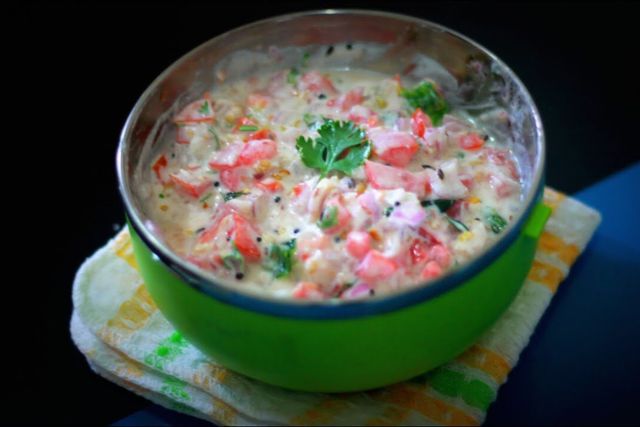Surnali Recipe : Unlocking the Delights of a Traditional Konkani Pancake
In the rich tapestry of Indian cuisine, each region boasts its own unique flavors and culinary traditions. Among the lesser-known gems is the Surnali Recipe, a traditional pancake from the Konkani cuisine of coastal Karnataka and Goa. Surnali, also known as Suran Pole, is cherished for its light, fluffy texture and subtle sweetness, making it a delightful breakfast or snack option. In this comprehensive guide, we’ll explore the origins of Surnali, delve into its ingredients, discuss its health benefits, and provide you with a step-by-step recipe to recreate this culinary masterpiece in your own kitchen.
Origins and Cultural Significance of Surnali Recipe
Surnali holds a special place in the culinary heritage of the Konkan region, where it is often prepared during festivals, weddings, and special occasions. The name “Surnali” is derived from the Konkani word “Surnu,” which means rice. Traditionally, Surnali was prepared using rice and urad dal (black gram dal), fermented overnight to enhance its flavor and texture.
This pancake not only serves as a delicious breakfast item but also carries cultural significance, often symbolizing prosperity and hospitality in Konkani households. Over the years, variations of Surnali Recipe have emerged, with some recipes incorporating coconut, jaggery, or bananas to add depth to its flavor profile.
Ingredients You’ll Need for Surnali Recipe
Before embarking on your Surnali-making journey, gather the following ingredients:
- 1 cup rice (preferably Sona Masuri or any short-grain rice)
- 1/4 cup urad dal (black gram dal)
- 1/4 cup grated coconut (fresh or desiccated)
- 2 tablespoons jaggery (grated or powdered)
- 1/2 teaspoon fenugreek seeds (methi seeds)
- 1/2 teaspoon salt
- Oil or ghee, for cooking
- Water, as needed for grinding and batter consistency
Health Benefits of Surnali Recipe
Surnali Recipe offers not only a delightful taste experience but also several health benefits:
- Rich in Carbohydrates: Surnali provides a good source of complex carbohydrates from rice and urad dal, offering sustained energy throughout the day.
- Probiotic Benefits: Due to the fermentation process involved, Surnali aids in digestion and promotes gut health, thanks to the beneficial probiotics produced during fermentation.
- Nutrient-Dense: The addition of coconut and jaggery enhances the nutritional profile, providing essential vitamins, minerals, and dietary fiber.
- Gluten-Free Option: As Surnali is made from rice and urad dal, it naturally avoids gluten, making it suitable for individuals with gluten intolerance or celiac disease.
Step-by-Step Surnali Recipe

Now, let’s dive into the process of making Surnali Recipe:
Step 1: Preparation
- Soaking the Ingredients: Rinse the rice and urad dal thoroughly under cold water. In a bowl, soak them together along with fenugreek seeds for about 4-6 hours or overnight.
- Grinding: After soaking, drain the water and grind the rice, urad dal, and fenugreek seeds together with grated coconut, jaggery, and salt. Add water gradually to achieve a smooth, pourable batter consistency, similar to pancake batter.
- Fermentation: Transfer the batter to a large bowl or container. Cover it with a clean cloth or lid and let it ferment in a warm place for 6-8 hours or overnight, depending on the climate. Fermentation enhances the flavor and texture of Surnali.
Step 2: Cooking Surnali Recipe
- Preparing the Griddle: Heat a non-stick or cast-iron griddle (tava) over medium heat. Lightly grease it with oil or ghee.
- Pouring the Batter: Stir the fermented batter gently. Pour a ladleful of batter onto the center of the heated griddle, spreading it in a circular motion to form a thin pancake (similar to dosa).
- Cooking: Drizzle a little oil or ghee around the edges of the pancake. Cook for 2-3 minutes on one side until the edges start to lift and the surface appears cooked.
- Flipping: Carefully flip the Surnali Recipe using a spatula. Cook for another 1-2 minutes on the other side until golden brown spots appear. Repeat the process with the remaining batter.
- Serve: Transfer the cooked Surnali to a plate. Serve hot with a side of coconut chutney, sambar, or a dollop of ghee for a traditional Konkani breakfast experience.
Tips for Perfect Surnali Recipe
- Consistency: Achieve the right batter consistency—smooth and pourable but not too runny—by adding water gradually during grinding.
- Fermentation: Ensure the batter ferments well to develop the characteristic sourness and lightness of Surnali. The time needed for fermentation may vary based on ambient temperature.
- Cooking Technique: Use a well-heated griddle and adjust the flame to medium heat for even cooking and to achieve golden brown edges.
Surnali represents the essence of Konkani culinary artistry—simple yet flavorsome, and deeply rooted in tradition. Whether you’re exploring new cuisines or seeking to recreate authentic flavors at home, this recipe promises a delightful journey into the heart of Konkan cuisine. With its unique blend of rice, urad dal, coconut, and jaggery, Surnali offers a taste experience that celebrates both flavor and heritage. Embrace the warmth of Konkani hospitality with every fluffy bite of homemade Surnali, and savor the culinary magic of this beloved pancake from coastal India.
FAQs About Surnali Recipe
What is the texture of Surnali like?
Surnali has a soft, fluffy texture with a slight crispiness on the edges, similar to a pancake.
Can I make Surnali without fermentation?
Fermentation is crucial for developing the characteristic flavor and texture of Surnali. However, you can try using buttermilk or yogurt as a fermenting agent for a quicker version.
Is Surnali sweet or savory?
Surnali has a subtle sweetness due to the addition of jaggery but is primarily considered a savory dish, often served with spicy accompaniments.
What are the different variations of Surnali?
Variations include adding mashed bananas or using different types of rice for a unique flavor profile.
How do I store leftover Surnali?
Store leftover Surnali in an airtight container in the refrigerator. Reheat on a hot griddle or microwave before serving.
Can I make Surnali gluten-free?
Yes, Surnali is naturally gluten-free as it is made from rice and urad dal.
What are the best side dishes for Surnali?
Surnali pairs well with coconut chutney, sambar (lentil stew), or a simple dollop of ghee.
Can I freeze Surnali batter?
It’s not recommended to freeze the batter as fermentation is a crucial step that should be done fresh.
How do I adjust the sweetness of Surnali?
Adjust the amount of jaggery according to your preference for sweetness.
Is Surnali Recipe healthy?
Yes, Surnali is considered healthy due to its nutrient-rich ingredients and probiotic benefits from fermentation.






